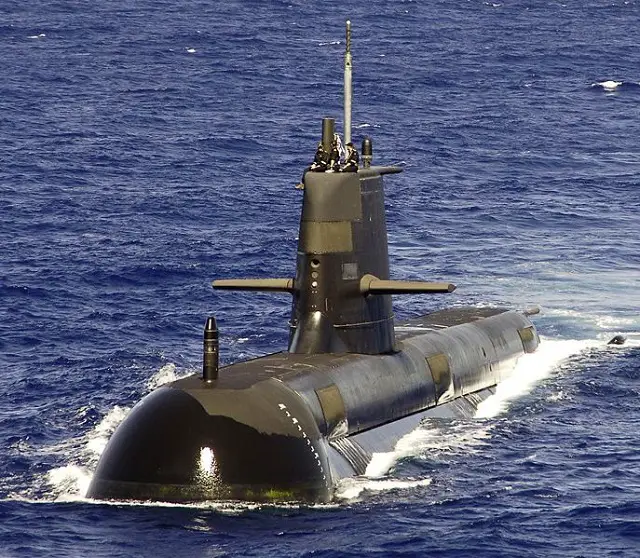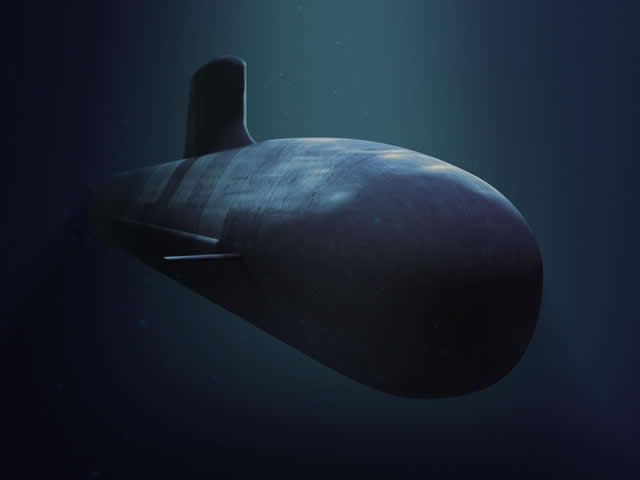Q&A With Raytheon on Combat System Integration for Australia's Future Submarines
 Raytheon has been working with the Royal Australian Navy to integrate and sustain the Collins Combats System successfully for over 15 years. US Navy picture of a Collins-class SSK. |
|||
NR:
Will your engineers work in France at a DCNS site at some point of the
program? Raytheon: Raytheon Australia is committed to having Australians undertake the CSI role in Australia. We regard this as fundamental to our offering and critical to a sovereign Australian submarine combat system capability. This means we will not be using a fly-in fly out workforce for this activity. However, our experience in similar programs in Australia is that having key staff resident in country with key partners can significantly reduce risks on the program. Communication and collaboration is improved, as people can more easily meet and talk face to face to resolve issues quickly. As CSI, we will establish a resident project team of Australians in France with DCNS. Staff would rotate through these resident roles, sharing knowledge and building relationships that will help us deliver this program over the coming years. NR: Is your combat system based on an existing/in service one? What makes it unique, what is its main advantage in your opinion? Raytheon: The competition for Combat Systems Integrator does not seek a combat system. Defence instead seeks a partner who brings extensive skills and experience in Combat Systems Integration in Australia. The Combat System equipment - the sonar, other sensors, navigation and communications equipment - will be selected later, as part of the overall Future Submarine design process. The CSI will then work together with DCNS to integrate the selected equipment into the Future Submarine. We are Australia’s premier Combat System Integrator, with a workforce of over 500 Australians working on combat systems here in Australia today. We are not seeking to sell our own equipment; we are product agnostic for the combat system equipment, and our trade study process will ensure that selections are made in the best interests of the Australian Navy. We are safe hands for US combat system elements, but as an Australian CSI, we are also safe hands for Australian classified requirements and equipment. We have been working with the Navy to integrate and sustain the Collins Combats System successfully for over 15 years. We look forward to continuing this collaboration success story with DCNS and the Royal Australian Navy for the Future Submarine. The same quesions were asked to Lockheed Martin. Follow this link for Lockheed Martin's answers. The Australian Government has selected DCNS as its preferred international partner for the design of 12 Future submarines for the Royal Australian Navy. The announcement was made on April 26 2016 by the Australian Prime Minister the Hon. Malcolm Turnbull, the Minister for Defence, Senator the Hon. Marise Payne, The Minister for Industry, Innovation and Science, the Hon. Christopher Pyne and The Chief of Navy, Vice Admiral Tim Barrett. DCNS was competing with the Shortfin Barracuda design against TKMS' Type 216 and Japan's Soryu class designs. Based on the French Navy Barracuda SSN currently in final stage of construction, the Shortfin Barracuda is 3 meters shorter (94 meters) and 200 tons lighter (4,500 tons). |
|||



























